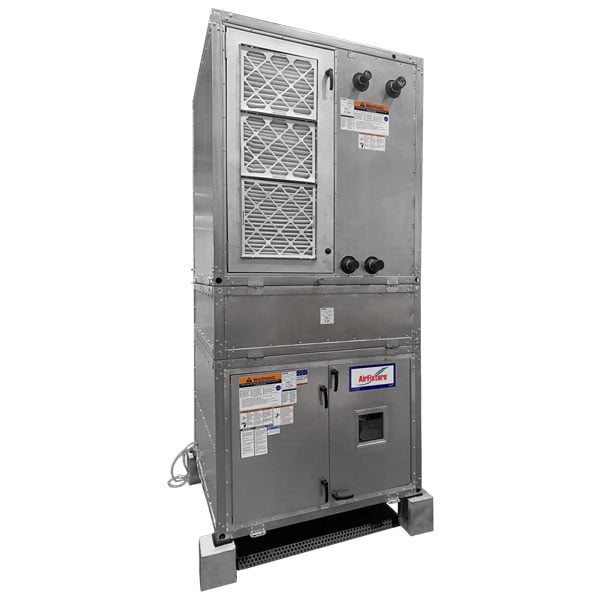QT-35 Air Handling Unit (AHU)
QT-35 Air Handling Unit Details
The Air Tower is a compact, vertically-oriented downblast air handling unit specifically crafted for UFAD (Underfloor Air Distribution) HVAC systems. Designed with efficiency in mind, this unit is ideal for minimizing equipment and mechanical room space, making it suitable for structures of all sizes.
With a high degree of placement flexibility, these air handling units can be strategically positioned on the roof, in the basement, or on various floors of a building. Typically, Air Towers are best situated along the perimeter of the building core, ensuring both optimal performance and seamless architectural integration.

Why Use QT-35 Air Tower Units?
Unit mounted controls
Integral bypass door allows for smaller room
QuietTower includes VFDs and disconnects
Low sound with 3rd party factory test verification
Optimized for UFAD Performance
In a UFAD system, the air handling unit is central to reliable performance. AirFixture units are designed to maintain consistent pressure, airflow and temperature throughout the underfloor plenum—supporting occupant comfort, energy efficiency, and long-term system reliability.
AirFixture is our preferred go-to expert for all solutions related to Underfloor Air Distribution. Their inputs help us with not only the design of the project but also successful execution and client satisfaction.
I’m always worried about trying something radically different in our projects. What if it doesn’t go to plan? What if there’s something we haven’t considered? Those concerns were completely unfounded with UFAD. it was far less complex, and way easier to plan and install than a traditional system.
Blog & Resources
2 min read
Indoor Air Quality Keeps Tenants Happy
Sep 5, 2025
6 min read
UFAD: 8 Reasons Tenants Will Rent Your Space
Jul 2, 2025
Contact Our UFAD Experts!
Fill out the form today to get more information on how UFAD will help you reduce energy costs and improve air quality.